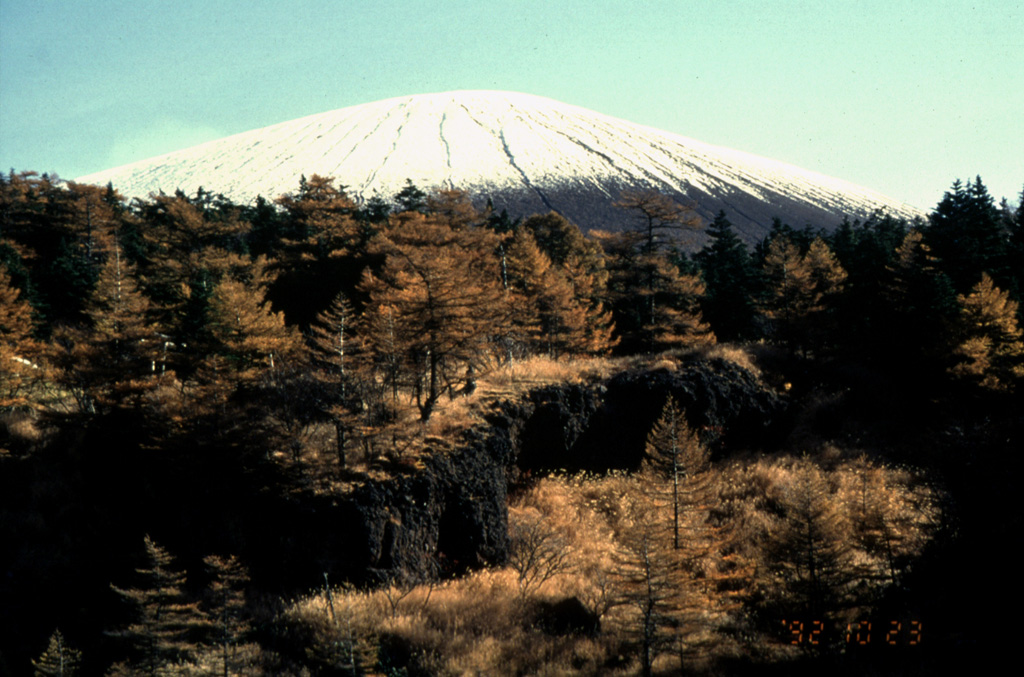Global Volcanism Program | Image GVP-06472

The gully in the foreground below Maekakeyama exposes deposits of the Oiwake pyroclastic flow, which was emplaced during a major explosive eruption in 1108 CE. This Plinian eruption, the largest from Asama during the Holocene, produced 0.4 km3 of asfall followed by emplacement of the 0.6 km3 Oiwake pyroclastic flow and the Butai lava flow down the NW flank from the crater. The summit of Maekakeyama collapsed after this eruption to form a 0.9 x 1.3 km crater.
Photo by Yukio Hayakawa, 1998 (Gunma University).
![]() This image is made available under the Creative Commons BY-NC 4.0 license terms.
This image is made available under the Creative Commons BY-NC 4.0 license terms.

Asamayama
